THE FILMMAKING PROCESS OF ‘THE SEED’
THE SEED is a minimalistic sci-fi live-action short film set on a post-apocalyptic Earth. One survivor of a global battle with invaders from another world may have found a way to save the human race and the planet on his journey across the wasteland. I was the director / cinematographer / editor of the film and knew that we needed VFX shots that were out of my capabilities to create.
To create ‘THE SEED’, we embraced Unreal Engine and Virtual Production (VP) to augment and enhance the narrative storytelling, with a full 2 minutes of the 10-minute film created using Unreal Engine. Our short film is low budget but incorporates big ideas and a glimpse into the future of filmmaking.
If you can envision a story…you can make it a cinematic reality. You don’t need a Mandalorian-level budget to accomplish photorealistic imagery.
VP tools like Unreal Engine are free and available to everyone:
Download UNREAL ENGINE for free
Download free and paid 3D assets at the UNREAL ENGINE MARKETPLACE
I hired Unreal artist Azra Alkan to create the shots we needed to complete the film. With her skills, we were able to visually tell the story using these new technologies.
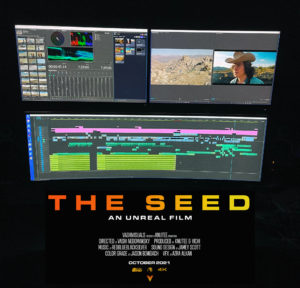
THE SEED – final timeline
Our goal was to blend the live-action footage seamlessly with photorealistic 3D characters, assets and environments made from scratch in Unreal Engine to tell an engaging and mystical story. The final 10-minute film is composed of 85 individual shots that mix both real and Unreal footage.
I filmed 103 camera set-ups (individual shots) in just 2 days of photography across the Mojave Desert and the Coachella Valley of California. Our 3-person cast & crew captured the visuals and performances for the story I edited in post-production.
Here’s a look into the tools and techniques we used to create the film in both the pre-production and post-production phases of the filmmaking process.
TOOLS OF THE TRADE
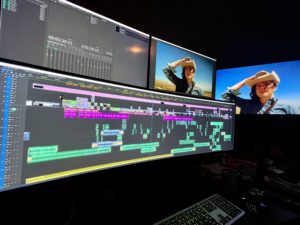
Dell monitors.
I always like to frontload my workstation with the best components within my budget to future-proof my edit bay and give me the best performance possible during post-production. Unreal Engine – and VP in general – require a lot of horsepower in both the CPU and GPU to achieve real-time playback and real-time ray tracing. Both are critical needs so I can see the shots play back instantly and give feedback, so the proper adjustments can be made.
If the team has to wait hours for a render before making creative or technical decisions on a shot-by-shot basis, then that time lost becomes a financial and scheduling nightmare. Real-time is a necessity that our team could not live without.

The DELL Precision 7920 workstation we used on this project

NVIDIA RTX A6000 GPU
Here is the list of tools we used to achieve our goals and work at the most efficient level:
DELL Precision 7920 Tower Workstation (24-core intel / 192GB RAM)
DELL Precision 7750 Mobile Workstation (12-core intel / 128GB RAM)
NVIDIA RTX A6000 GPU (48GB RAM)
NVIDIA RTX 8000 GPU (48GB RAM)
DELL monitors: U4919DW (UHD) / UP3218K (8K) / UP3221Q (4K)
Samsung NX1 camera (4K digital capture)
Samsung NX 18-55mm lens
Adobe Premiere Pro
Adobe After Effects
Adobe Audition
DaVinci Resolve Studio
Dehancer film emulation plugin
Frame.io
Nuke
Topaz Video Enhance AI
Unreal Engine
CRAFTING A 100% UNREAL ENGINE 4K SHOT WITH AZRA ALKAN
We created over 16 VFX shots using Unreal Engine in THE SEED. To help explain an Unreal Engine shot from scratch to my Unreal artist Azra, I tried to give as much info as possible to help her craft the shot. I used reference images, diagrams, camera and lighting information to inform Azra of my intent for each shot before she started.
To replicate real camera moves with a virtual camera, I did two things. I showed restraint with the virtual moves to keep them in the real-world physics of an actual, heavy motion picture camera. No drone shots or fast-flying shots that would break the illusion and feel out of place. Second, I made sure the Unreal Engine shots I created fit within the pre-established shooting style of the film. I chose five kinds of shots to replicate virtually: POV, dolly, pedestal up, handheld and crane shots.
In this example, the final shot of the film is a 37-second crane shot that was the most demanding in every way. To help dial in the shot, I made an overhead shot chart with the motion of the camera, elevation and the 3D character’s walking path. These detailed reference points helped Azra nail the final shot with only one round of revisions.
My notes to Azra on creating the shot:
Unreal Engine Filmback virtual camera settings
1. Start with close up on fern at forest floor level. Pedestal up to to 3 feet and dolly left to right.
Rack focus slowly to infinity so we see tree trunk pass frame as we dolly.
2. Samson is in the middle depth area walking left to right, center-framed.
Camera dollies with Samson then starts climbing gradually through the thicker treetops.
3. Leaves and branches block our view as we keep climbing. The camera is still dollying as we pop up through the treetops and land on the final frame. The camera is at the maximum height of Supertechno100 which is 100 feet.
The final frame could have a clearing where Samson is tiny in the mid-ground walking out of the forest, across a green field with mountains in the background.
SOUND MIX & DESIGN WITH JAMEY SCOTT
I handed over a temp sound mix created during editorial to my sound designer & mixer Jamey Scott. My temp mix was comprised of my selected audio cues and sound FX that best represent my sonic ideas of the film and include specific sounds for key moments that need to pop.
I trusted Jamey to replace or sweeten the existing sound effects and blend them using all his wizardly sonic skills to create a soundscape that supports the narrative and glues together the visuals.
Here are my overall ideas shared with Jamey to give him guidance for the final mix:
“Just wanted to pass on my broad thoughts for the sound design / mix.
Story-wise, we are basically joining the last 10 minutes of a feature-length film.
The aliens landed, the earth was deforested, Man fought back. Aliens died. Hero on last push.
All that shit happened and now the Hero has to save the Earth.
There are 4 sections to THE SEED that have different sonic intentions. (TC of video file):
0:00 – 00:34 – Pre-title sequence. Our hero (Samson) has acquired the seed and is following the map to the lava tubes to save the earth. The weird sounds in the intro are the last of the aliens dying all around the planet. It is their collective death cries and Samson is aware of them.
00:38 – 03:42 – Samson’s journey across the desert. I would like to enhance / focus on his natural surroundings with a constant wind (varying as needed), blowing sand, footsteps and anything else to drop the viewer into his predicament and make them feel the oppressive climate and surrounding.
03:46 – 04:44 – Samson is in the high desert. No wind. More ominous in tone as he nears the final destination and the music cue can slowly fade away as he reaches the top stairs of the lava tubes.
04:45 – 07:28 – Entering the cave and up to putting the seed into the mason jar, I would love to have that ping-pong echoey reverb feel of a vast cavern that trails off. If possible to play with the surround to have a swirling effect here or there that could be ominous and creepy. No music, just dread and reverb tails of the key actions which can be bigger than life…placing jar in dirt, putting flower in jar. Those last two actions start the chain reaction.
I built as much chaos for the green rebirth in the cave as I could, but if you are able to feather in some low drones or accentuate the intensifying frenzy with any sonic flourishes, that would be wonderful!
07:29 – end – Perhaps we cut out all the sound except for an echo of the cave chaos when he emerges from the lava tubes and sees the green earth again for the first time. A beat of release until his 2nd line ‘Humans aren’t so different from that forest.’ Then bring in the swaying grass and reeds and gentle wind in the trees. Nature has returned. He will survive.
On the last shot, perhaps a couple ‘leaf fly-bys’ as the camera crane rises up through the branches (fwoomps) before landing on the final frame.”
Jamey then created his final mix in Pro Tools and completed a stereo mix for web delivery and a 7.1 mix for the DCP to screen in theaters.
COLOR GRADE WITH JASON BOWDACH CSI
The visual look of THE SEED was guided by the fact the Earth was polluted and injured, and that allowed us to approach the color grade with an aggressive and saturated look to reflect that toxic feel. We wanted to show an Earth with exaggerated colors and a hyper-realistic palette so it did not feel natural but still a bit familiar.
Because the film was shot at different times of day in 8 different locations, Jason had to balance all the shots first so they all lived in the same color world. Once balanced, we experimented with many looks and degrees of “toxic visual vibes” before settling on a contrasty, harsh and saturated look that still retained the believability of the Earth that we all know.
Jason put a great amount of care into adding many components of photochemical film looks onto our digital 4K footage to add back some analog flavors we both love. He color graded in DaVinci Resolve using his proprietary method that sometimes included over 12 nodes per shot to address both technical and creative issues in making all the shots match our desired vision. This custom approach included adding:- film halation
- film emulsion emulations
- film bloom
- integrated film grain
- the emulation of Kodak 2383 film print
For the final 4K output. I created a VashiFrames image that contained all the shots in the film to use as a reference when discussing specific shots with Jason:
THE MUSIC OF THE SEED
The original score for the film was created by RedBlueBlackSilver. A mysterious musician living in Joshua Tree, he channeled the desert itself and through methods both analog and digital, crafted the soundtrack to match the survivor’s journey. The music was recorded in 7.1 surround sound for the most immersive sonic experience.
The music cue for the final shot in the film was written by my friend and film composer Ryan Amon from his album Consciousness. I knew the epic resolve his song inherently contained would be the perfect end to the story.
Ryan Amon Consciousness Album
The visual impact of the story, once amplified and united with the perfect music, is much more than the sum of its parts. I am so grateful to both of these musicians for their glorious talents and contributions to the final film.
FINAL FILES
THE SEED was finished in 4K with both stereo and 7.1 sound mixes. For YouTube and Vimeo, we delivered a 4K (3840×2160) h.264 file encoded at 80Mbps which was 5.2GB. The re-compression on YouTube in 4K created a 150MB file and a 1.5GB file on Vimeo…so please watch it on Vimeo if you can!
The 4K DCP with a 7.1 audio mix retains the highest quality for projection and screenings and I used DCP-o-matic for that final step.
The 4K full DCP is 18GB and ready to load onto any DCP player to watch properly in the highest quality on the big screen of a theater!
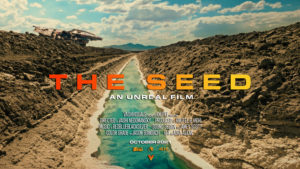
THE SEED – 4K DCP ready to play in any theater!
You can also watch all 5 in-depth Behind the Scenes videos showing how we created THE SEED.
The chapters include:
#1 – Project Overview
#2 – Creating Unreal Engine Worlds
#3 – Creating Unreal Engine Characters
#4 – Blending 3D Unreal Engine VFX with 2D Footage
#5 – Making Unreal Look Cinematically Real
Lastly, here’s a more in-depth breakdown in Google Docs of the tools we used on THE SEED and why we used them.
Enjoy!
Until next time…
Vashi Nedomansky, ACE

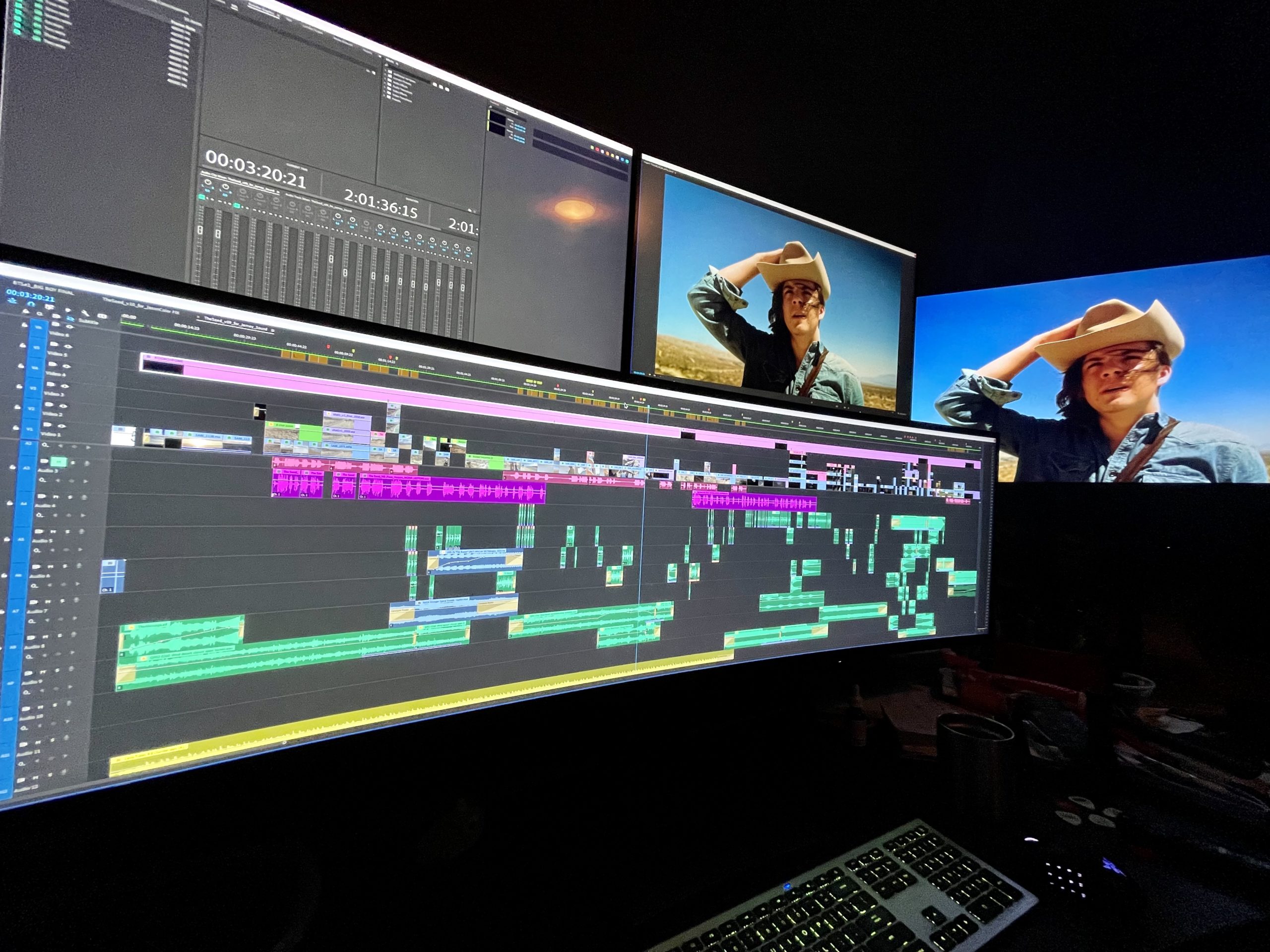
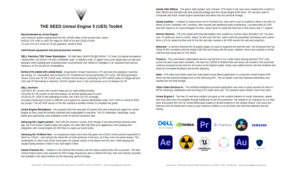
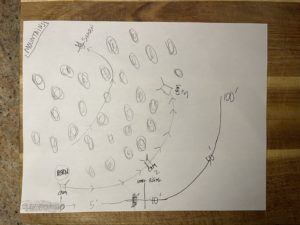
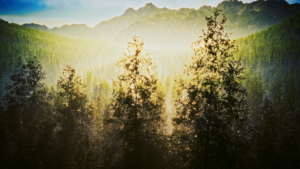

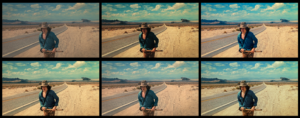
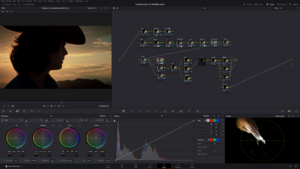
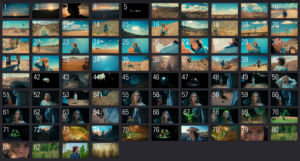
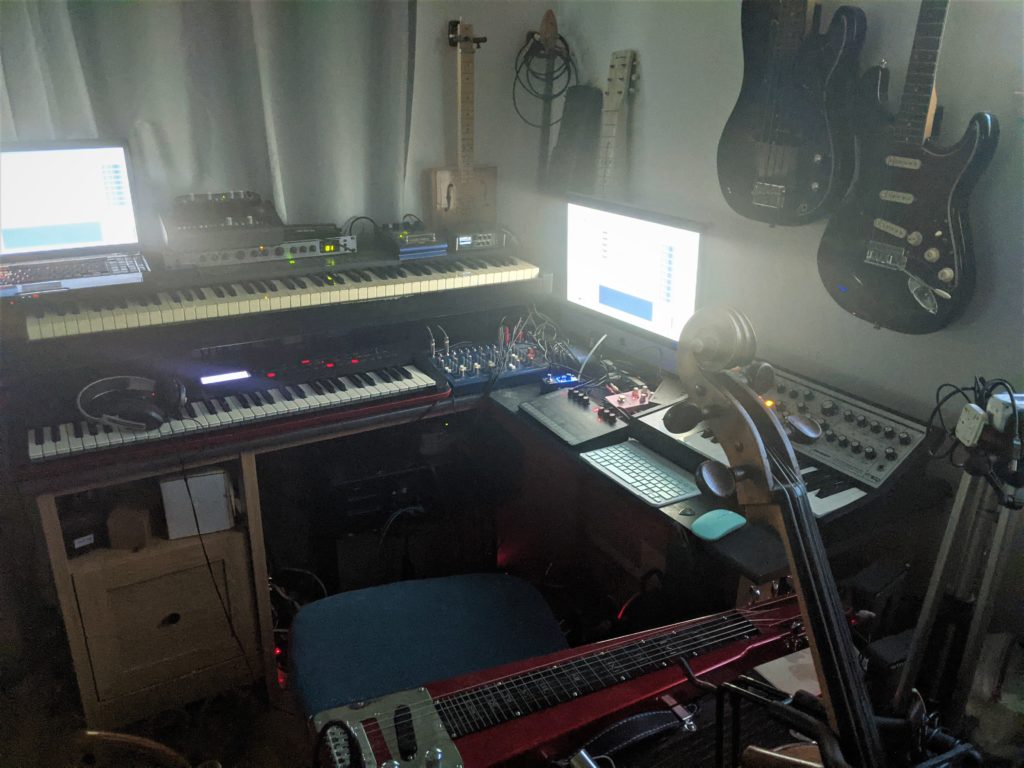
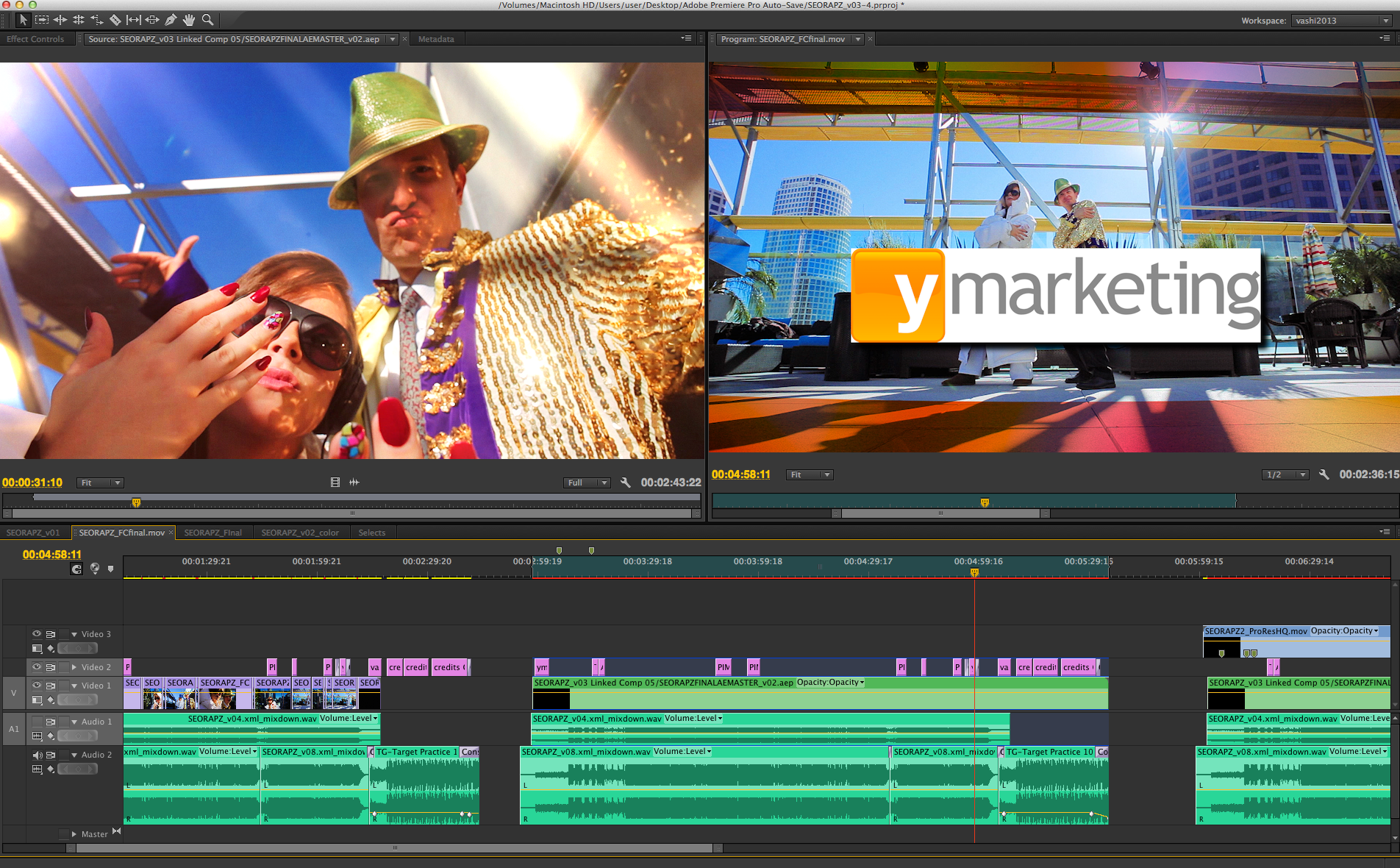
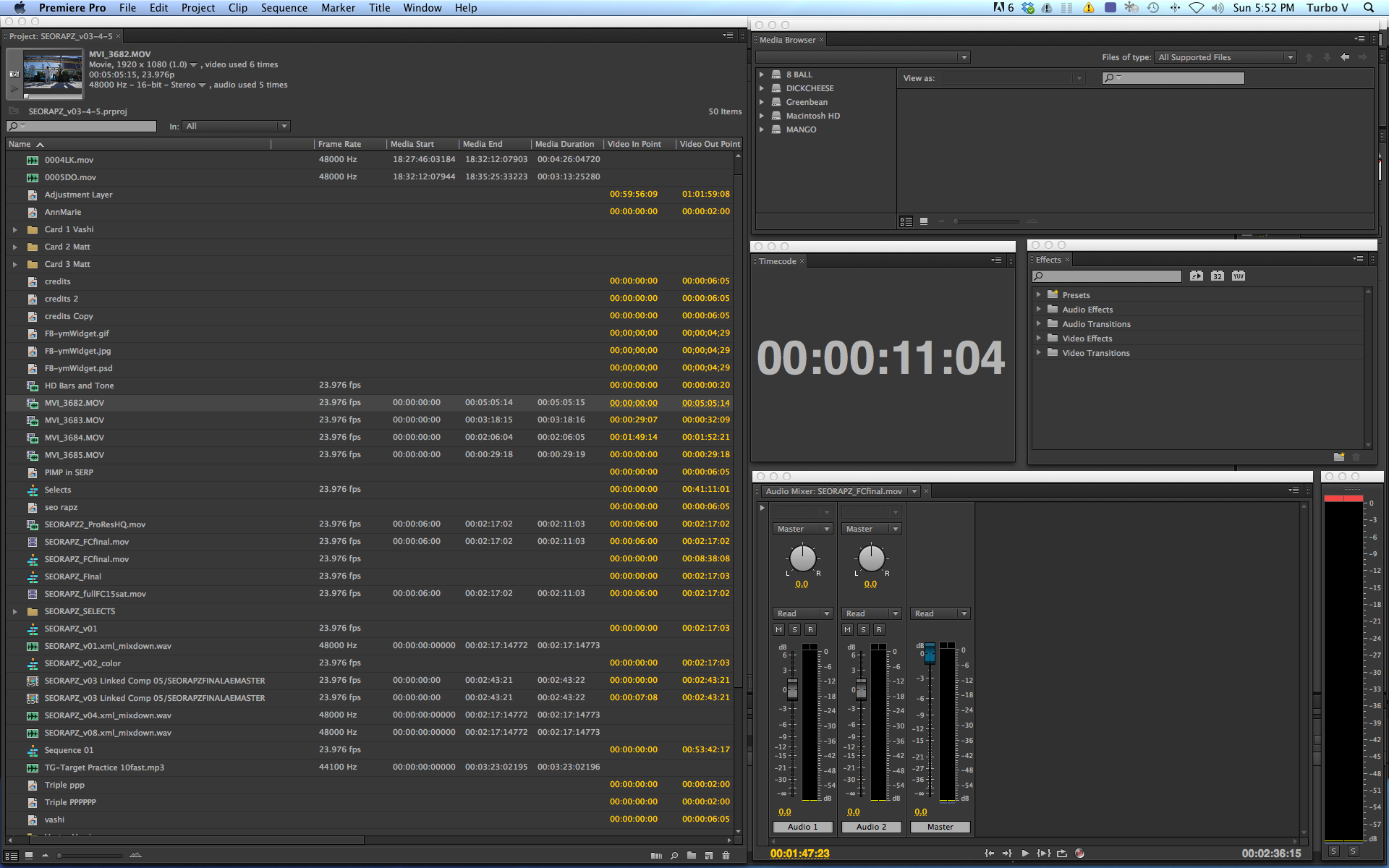
There are 2 comments
Wonderful film! Thanks for sharing the pieces of the puzzle you had to create to make this. Herb
Thanks for watching Herb! It was a great learning experience and I love shooting in the desert. I’m excited to push it further on the next project.